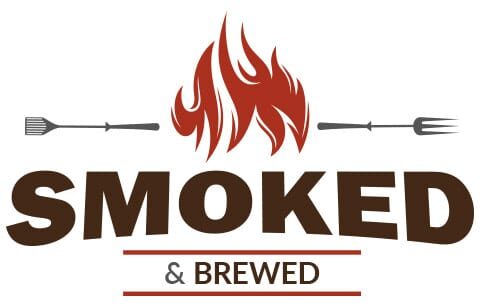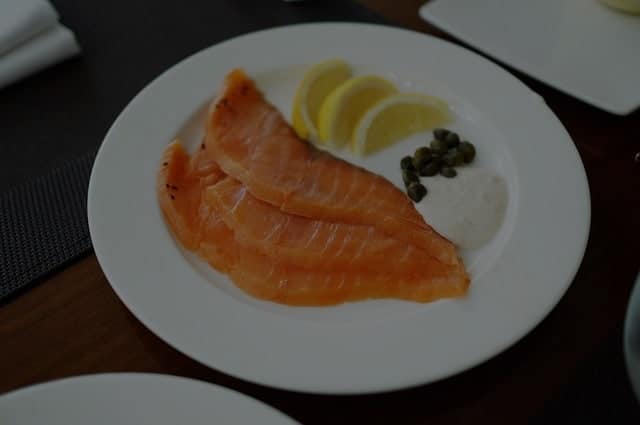Salmon is one of the most popular fish in the world. It is a part of many various cultures, which means there are lots of special methods of serving it. Nowadays, one of the fastest-growing methods of cooking it is smoking it. Smoking salmon can add both flavor and texture to the fish making it even more of a delicacy.
One question that comes about often is: is smoked salmon considered raw? It depends. Smoked salmon can be smoked hot or cold. When salmon is hot-smoked (120-225°F/49-82°C), it is cooked all the way through. When salmon is cold-smoked (75-90°F/24-32°C), it is still considered raw, though may have a longer shelf-life.
While this is good to know, there are many other questions that can arise around smoked salmon and its safety. Below I will outline some of the most common questions about smoked salmon.
Is Smoked Salmon Safe to Eat?
The recent news about Listeria bacteria on smoked salmon made everyone doubt the safety of this product. It’s extra worrisome since this deadly pathogen is present in popular salmon products. With everyone doubting the safety of this food, what makes it safe for consumption?
The good news is that both home-smoked and commercial salmon can be free from foodborne pathogens. As long as you follow the best practices in preparation and storage, it’s safe to eat. In most cases, you need to worry about salt, smoke, and heat.
If you smoke salmon without the right salting and cooking methods, it can become the perfect environment for pathogens to grow in. For example, if you store smoked salmon in vacuum packing in refrigerators (not freezers) for a long time, you are able to catch botulism.
Salmon Smoking Methods – What’s the Difference?
The type of smoking method used can affect the safety of salmon. The two most common methods of smoking salmon are cold smoking and hot smoking. Here are the differences in safety according to how they are prepared:
Cold Smoking
Most experts agree that cold-smoked salmon is riskier than their hot-smoked counterpart. After all, the latter uses 80-90F while curing and smoking the fish.
With cold smoking, the fish is unpasteurized. That means it needs careful handling to ensure that it’s free from harmful pathogens. The result is a product safe for healthy people with an uncompromised immune system.
As with other semi-raw meat products, cold-smoked salmon is risky when eaten by pregnant women. It’s also dangerous for the elderly as well as immune-compromised individuals. That’s why most countries discourage people from these groups to avoid it.
Another thing to remember: cold smoking a salmon means it has a short shelf life. When stored in a refrigerator, it only lasts for a week or two, but a freezer can extend it to a month at most. This is due to the Listeria bacteria that can grow even at lower temperatures.
Hot Smoking
As for hot smoking, you often want to brine the salmon ahead of time instead of curing. The temperature used while smoking the salmon is 120-225°F or more. The result is a product with a more pronounced natural flavor. Hot smoked salmon can have a longer shelf life, and often does not need to be refrigerated as long as it stays in the original packaging.
Is Smoked Salmon Safe to Eat Without Cooking?
Regardless of the type of smoking used, smoked salmon is safe to eat without cooking or heating. It’s especially the case for commercial salmon since it undergoes a multi-stage process that kills most pathogens. For cold-smoked salmon, various bacteria might grow but it won’t reach a harmful level as long as it’s eaten immediately or within the prescribed amount of time.
Hot-smoked salmon does not usually have any problems with bacteria. As said before, it is cooked in hot temperatures that kill all possible contaminants. That means reheating it is unnecessary, and will even cause the salmon to become dried out.
You should still check the packaging label. It should say whether the salmon is safe for consumption without reheating. In most cases, don’t expose the fish to direct heat since it can ruin its delicate flavor.
Is Raw Salmon Safe to Eat?
The Food and Drug Administration (FDA) considers salmon as a parasite source. Helminths, as well as other species of tapeworms, thrive in wild salmon caught from Alaska and Japan. People who ate raw salmon from those areas also have these organisms in their digestive tracts.
Aside from tapeworms and bacterial pathogens, raw salmon might also have environmental contaminants. Their bodies might have trace amounts of heavy metals and persistent organic pollutants (POPs). The latter are toxic chemicals such as pesticides often found in the fatty tissues of the salmon.
With that said, eating raw salmon is dangerous when not done well. It’s better to eat flash-frozen salmon (usually flash frozen at -31°F) since it will kill any parasites inside it. Unfortunately, this isn’t possible when using home freezers since it doesn’t have the means of getting that cold.
When preparing raw salmon in your home, the kitchen surfaces, as well as the knives and serving utensils, are sterile. Keep it inside a refrigerator before serving to avoid contamination.
What are the Nutritional Benefits of Smoked Salmon?
The USDA nutritional guidelines classify smoked salmon as a protein food. It contributes around 5-6.5oz of protein foods needed each day. It’s a fatty fish that aids in your daily oil allowance since it contributes around 5-7 teaspoons.
Here is the breakdown of smoked salmon nutrition:
Protein
Smoked salmon is a great source of dietary protein. It keeps your body tissues both strong and healthy. Without getting enough protein, your body will break down your muscle tissues as an alternative to get amino acids.
The food has complete protein since it gives all types of amino acids needed by the cells. If you eat 3oz of smoked salmon, your protein intake gets a 16-gram boost. This is around 25% of the average person’s daily protein requirements.
Fat
A 3oz smoked salmon serving will have around 4g of total fat. It also includes 0.5g of omega-3 fatty acids. These are good fats since it protects against memory loss, dementia, and depression.
It’s possible since the fats play a huge role in maintaining brain function. With the same serving of smoked salmon, you get about 41% of the daily omega-3 fatty acid intake for women. As for men, it only satisfies around 28%.
Iron
Eating smoked salmon gives important minerals like iron. It’s necessary since the mineral enables the blood cells to supply tissues with oxygen. This ensures your metabolism is stable and it helps you stay energized.
With low iron levels, you’ll feel more fatigued and have a faster heart rate. A standard smoked salmon portion will have 0.7mg of iron. It satisfies around 9% of the daily iron requirement for males and 4% for females.
Conclusion
Smoked salmon, especially hot-smoked ones, aren’t raw. They’re exposed to high temperatures that cook the meat and kill bacteria living in it. It makes them safe even when you don’t cook or reheat them.
As for raw salmon, make sure to prepare it in a sterile environment with clean tools. That way, bacteria won’t grow and pose health problems later on. Regardless, ensure that it’s flash-frozen before buying it if you plan on consuming it raw.
Scot has loved smoking food in his free time for the last few years. Each major holiday or off-weekend, Scot spends days testing and prepping new recipes for perfection.

